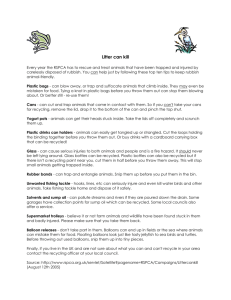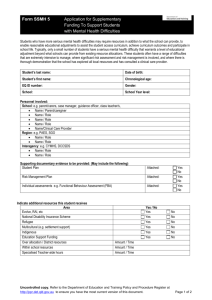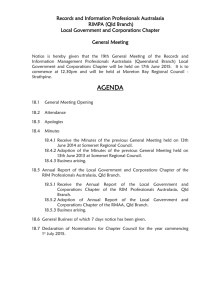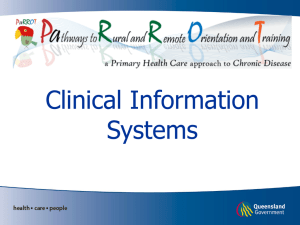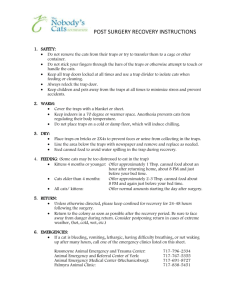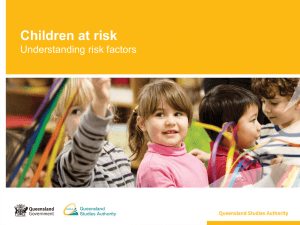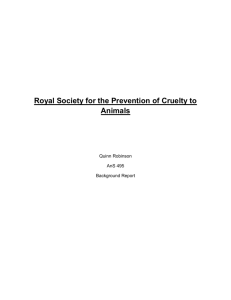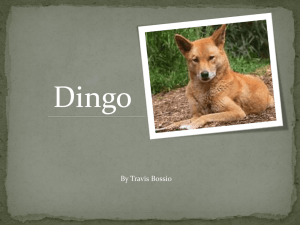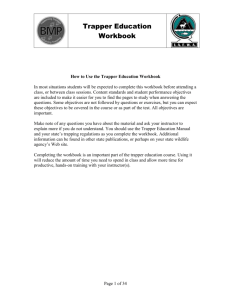RSPCA Qld Comments on the A guide to the use of Australian native
advertisement
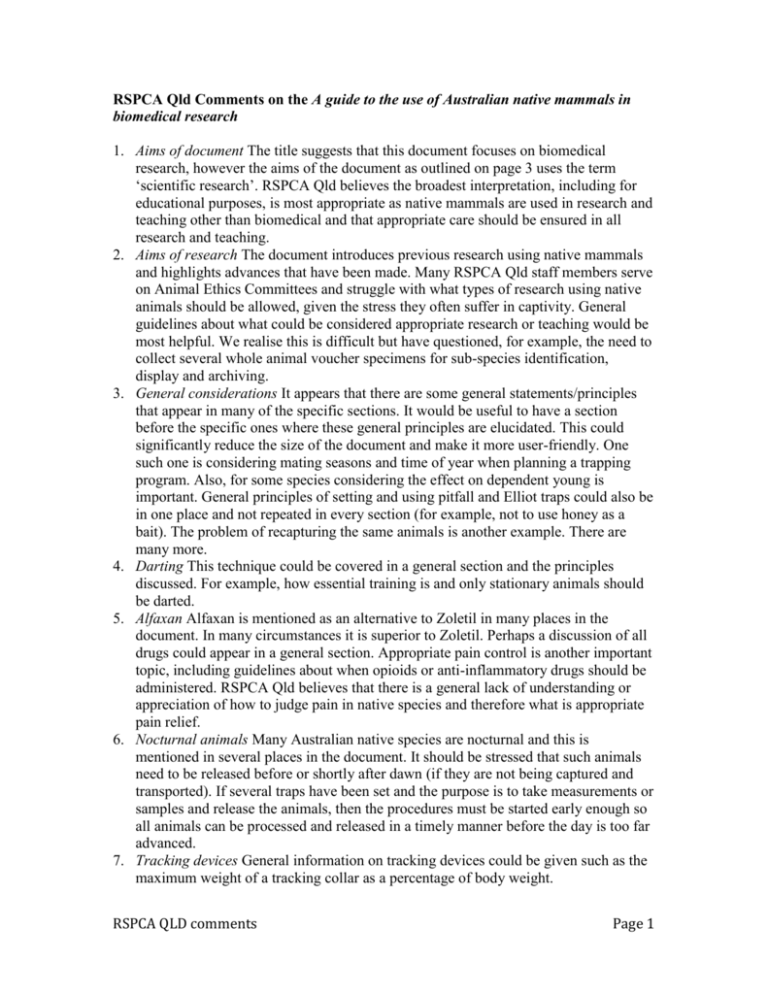
RSPCA Qld Comments on the A guide to the use of Australian native mammals in biomedical research 1. Aims of document The title suggests that this document focuses on biomedical research, however the aims of the document as outlined on page 3 uses the term ‘scientific research’. RSPCA Qld believes the broadest interpretation, including for educational purposes, is most appropriate as native mammals are used in research and teaching other than biomedical and that appropriate care should be ensured in all research and teaching. 2. Aims of research The document introduces previous research using native mammals and highlights advances that have been made. Many RSPCA Qld staff members serve on Animal Ethics Committees and struggle with what types of research using native animals should be allowed, given the stress they often suffer in captivity. General guidelines about what could be considered appropriate research or teaching would be most helpful. We realise this is difficult but have questioned, for example, the need to collect several whole animal voucher specimens for sub-species identification, display and archiving. 3. General considerations It appears that there are some general statements/principles that appear in many of the specific sections. It would be useful to have a section before the specific ones where these general principles are elucidated. This could significantly reduce the size of the document and make it more user-friendly. One such one is considering mating seasons and time of year when planning a trapping program. Also, for some species considering the effect on dependent young is important. General principles of setting and using pitfall and Elliot traps could also be in one place and not repeated in every section (for example, not to use honey as a bait). The problem of recapturing the same animals is another example. There are many more. 4. Darting This technique could be covered in a general section and the principles discussed. For example, how essential training is and only stationary animals should be darted. 5. Alfaxan Alfaxan is mentioned as an alternative to Zoletil in many places in the document. In many circumstances it is superior to Zoletil. Perhaps a discussion of all drugs could appear in a general section. Appropriate pain control is another important topic, including guidelines about when opioids or anti-inflammatory drugs should be administered. RSPCA Qld believes that there is a general lack of understanding or appreciation of how to judge pain in native species and therefore what is appropriate pain relief. 6. Nocturnal animals Many Australian native species are nocturnal and this is mentioned in several places in the document. It should be stressed that such animals need to be released before or shortly after dawn (if they are not being captured and transported). If several traps have been set and the purpose is to take measurements or samples and release the animals, then the procedures must be started early enough so all animals can be processed and released in a timely manner before the day is too far advanced. 7. Tracking devices General information on tracking devices could be given such as the maximum weight of a tracking collar as a percentage of body weight. RSPCA QLD comments Page 1 8. Dasyuridae a. Timing of capture Wherever possible dasyurides should not be captured during the breeding season. Spending hours in a trap while carrying several young adds significant stress to the animal. Also, during the breeding season, males can be in a frenzy and being trapped together can be extremely stressful. The issue of timing is raised with bandicoots but should be considered for all species (see above). b. Flooding of traps Traps can become flooded particularly in tropical areas of Australia. We recommend that bark or sticks be placed in the traps which will float and provide safe area if the trap does become flooded. Holes in the bottom of the trap may allow water to enter from the base. (Again this could be covered in a general section as mentioned above.) 9. Koala a. Capture with nooses RSPCA Qld believes noosing to capture koalas is never acceptable. Our veterinarians have carried out post mortems which have clearly demonstrated the damage to koalas’ necks from this type of capture technique. b. Transporting young It is usually inappropriate to separate the young and their mothers during initial transportation. If surgery of some kind is carried out on the koala then separation following this may be necessary. 10. Macropods a. Research with medium size and large macropods The risk to these animals through capture and handling is intense and this needs to be stressed so that Animal Ethics Committees will be aware of this while making decisions about research involving these animals. All methods of capture are risky. b. Young at foot None of the methods discussed mentions the possibility that a female macropod may have a young at foot and capture may result in the young being deserted. This is never acceptable, particularly for research purposes. c. Capture techniques RSPCA Qld has grave concerns about some of the catching techniques described. For example, we believe that the netting of a moving animal from a moving vehicle with a net on a pole has the potential to cause injury to the animal. Also, netting at a water trough will lead to intense stress in the kangaroo as it struggles and this would be worse in hot weather. 11. Dingoes a. Heat stress Dingoes are subject to heat stress during capture and restraint and this along with duration of restraint must be considered when deciding whether to use sedation. Dingoes need to lose heat through panting and prolonged muzzling is contraindicated. b. Trapping Cage trapping can be used. Dingoes should be left in leg-hold traps for a minimum period of time and the traps should be set in shaded areas. RSPCA QLD comments Page 2
